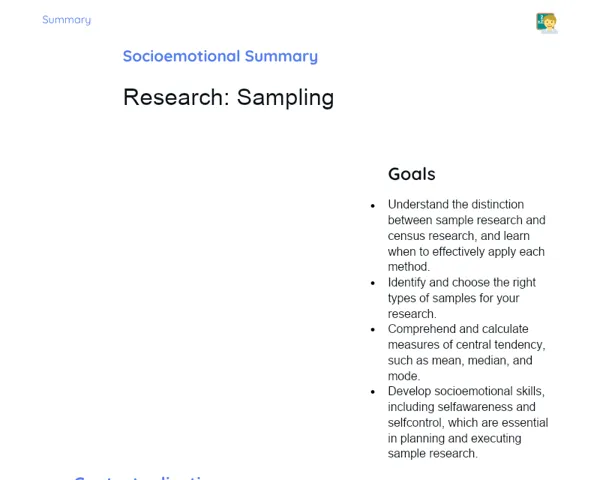Summary Tradisional | Operations: Mixed Numbers
Contextualization
Mixed numbers are a combination of a whole number and a fraction. We often come across them in daily life, especially while cooking. For instance, when a recipe calls for 2 1/2 cups of flour, we see a mixed number made up of the whole number 2 and the fraction 1/2. This format is quite handy in multiple domains, as it simplifies the reading and interpretation of measurements and quantities.
Besides cooking, mixed numbers are essential in various other activities, such as construction. When measuring materials like bricks and timber, many professionals rely on mixed numbers to maintain precision. A carpenter might need 3 3/4 meters of wood for a particular project. Grasping mixed numbers enables heightened accuracy and efficiency in diverse tasks, making it a valuable skill.
To Remember!
Definition of Mixed Numbers
Mixed numbers are made up of a whole number and a fraction. For instance, 2 1/2 is a mixed number where 2 is the whole part and 1/2 is the fractional part. They frequently appear in everyday scenarios, like measuring cooking ingredients or building materials. Being able to identify and work with mixed numbers aids in understanding and manipulating quantities across various fields.
The whole part of a mixed number represents a complete quantity, while the fractional part indicates a portion of that whole. For example, in 3 1/4, the number 3 shows three complete units and 1/4 signifies a part of a complete unit. This format helps express quantities that aren't whole, allowing for more accurate descriptions.
Not only do mixed numbers assist in practical situations, but they also provide a stepping stone to comprehend more advanced mathematical concepts. They act as a link between whole numbers and fractions, enriching our understanding of numbers and their applications. Mastering mixed numbers is a fundamental step towards tackling more complex mathematical operations.
-
Mixed numbers combine a whole number and a fraction.
-
Used in daily scenarios like recipes and construction.
-
Aid in interpreting and manipulating quantities.
Conversion of Mixed Numbers to Improper Fractions
To carry out mathematical operations with mixed numbers, we often need to convert them into improper fractions. An improper fraction has a numerator that is either greater than or equal to the denominator. The conversion process involves multiplying the denominator by the whole number and adding the numerator, while keeping the denominator unchanged. For example, converting 2 1/2 into an improper fraction entails multiplying 2 (the whole) by 2 (the denominator) and adding 1 (the numerator), leading to 5/2.
This conversion comes in handy because it simplifies arithmetic operations—including addition, subtraction, multiplication, and division. Improper fractions are easier to manage in these contexts as they eliminate the distinction between whole and fractional parts. Moreover, comprehending how to convert mixed numbers bolsters our understanding of fractions and their characteristics.
Practicing the conversion of mixed numbers to improper fractions also enhances mental and algebraic calculation skills. By consistently performing these conversions, students improve their multiplication and addition skills, as well as their familiarity with fractions' structure. This knowledge is essential for effectively solving mathematical problems.
-
Conversion is necessary for arithmetic operations.
-
Multiply the denominator by the whole number and add the numerator.
-
Facilitates mathematical manipulation and enhances understanding of fractions.
Operations with Mixed Numbers
When performing operations such as addition, subtraction, multiplication, and division with mixed numbers, it's crucial to understand the steps involved clearly. To add mixed numbers, we start by adding the whole parts followed by the fractional parts. If required, we convert the resulting fraction back into a mixed number. For example, in adding 4 1/3 and 2 2/3, we sum 4 and 2 to get 6, then we add 1/3 and 2/3 for a total of 1. The final outcome is 7.
When subtracting mixed numbers, if the fractional part of the minuend is smaller than that of the subtrahend, we need to borrow 1 from the whole part. For instance, when subtracting 3 1/4 from 5 1/2, we convert 5 1/2 into 4 3/2 to facilitate the subtraction. Multiplying mixed numbers involves converting them to improper fractions before performing the multiplication and then simplifying the result. For example, to multiply 2 1/2 by 3 1/4, we convert to 5/2 and 13/4, multiply them, and simplify.
Dividing mixed numbers also requires converting them to improper fractions first. Then we flip the divisor fraction and multiply. For example, to divide 5 1/2 by 1 1/4, we change them to 11/2 and 5/4, invert 5/4 to get 4/5, and multiply, yielding 22/5 or 4 2/5. Mastering these operations is crucial for addressing mathematical problems and understanding how mixed numbers function in real-life scenarios.
-
Addition: Add whole and fractional parts separately.
-
Subtraction: Borrow from the whole part if necessary.
-
Multiplication: Convert to improper fractions prior to multiplying.
-
Division: Convert to improper fractions and invert the divisor.
Practical Applications of Mixed Numbers
Mixed numbers are prevalent in various everyday activities, including cooking, construction, and measuring. For instance, while cooking, we frequently encounter measurements like 1 1/2 cups of sugar or 2 3/4 tablespoons of oil. Being able to work with these numbers is vital for achieving successful cooking outcomes. The ability to convert, add, subtract, multiply, and divide mixed numbers ensures accuracy in measurements.
In construction, mixed numbers are indispensable for measuring materials such as wood and concrete. A carpenter may require 5 1/2 meters of wood for a specific job. The precision of these measurements is critical to make sure the materials are sufficient and that the project finishes correctly. Understanding mixed numbers leads to greater accuracy and efficiency.
Beyond these applications, mixed numbers are also relevant in scientific and engineering settings. Time, distance, and volume measurements frequently employ mixed numbers to improve precision. Knowing how to handle these numbers is crucial for professionals across different technical fields. This skill also proves useful in daily tasks, like planning trips, calculating expenses, or tweaking recipes.
-
Cooking: Accurate measurements of ingredients.
-
Construction: Precision in measuring materials.
-
Science and Engineering: Measurements of time, distance, and volume.
Key Terms
-
Mixed Numbers: Combination of a whole number and a fraction.
-
Improper Fraction: A fraction where the numerator is greater than or equal to the denominator.
-
Conversion: The process of changing mixed numbers to improper fractions and vice versa.
-
Arithmetic Operations: Addition, subtraction, multiplication, and division of mixed numbers.
Important Conclusions
In this lesson, we delved into the definition of mixed numbers and the operations associated with them, including addition, subtraction, multiplication, and division. We recognized the significance of converting mixed numbers to improper fractions to facilitate these operations. Furthermore, we discussed how these concepts apply to everyday scenarios like cooking and construction.
Grasping mixed numbers and efficiently manipulating them is vital for accurately solving mathematical problems. This skill not only strengthens students' foundational mathematical knowledge but also prepares them to tackle practical challenges in various aspects of both daily life and professional environments. By mastering operations with mixed numbers, students gain a deeper insight into fractions and their uses.
We encourage students to keep exploring this topic, as regular practice is crucial for solidifying their understanding. Proficiency in working with mixed numbers is a valuable asset that will serve them well in many future situations, both academically and professionally. Hence, it's important for students to feel confident and motivated to further their studies in this area.
Study Tips
-
Practice converting mixed numbers to improper fractions and vice versa by solving various types of problems.
-
Engage in exercises involving addition, subtraction, multiplication, and division of mixed numbers to strengthen operational understanding.
-
Apply knowledge of mixed numbers in real-life situations, such as measuring ingredients in recipes or calculating materials for projects, to appreciate the practical relevance of the topic.


